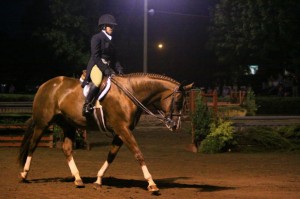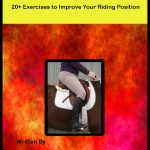Under Saddle Horse Show Tips – What the Judge is Looking For at the Trot and Canter
Under saddle horse show tips is a request from
Cathy gh. Thanks very much Cathy for giving us this request.
And if you have a request, please send me an email or it’s put it in a comments.
Hi there. My name is Laura Kelland May and welcome.
If it’s your first time here, please remember to subscribe and hit the bell icon. So you don’t miss any new videos coming out
What the judge is looking for at the trot and canter
Today we’re going to be talking about what the judge is looking for and some hunter under saddle horse show tips on how your horse should be moving at the trot and canter.
Please remember to stay to the end because I’ve put together a little quiz a little fun quiz.
Judges generally speaking really want you to succeed in your class. We really want you to do well, but there’s other people in the class. You’ve paid your money and there has to be a winner.
So we have to pick the winner based on performance movement and manners. I like the hunter jumpers
A bit about me
I usually get to judge the grassroots local provincial
regional and national level horse shows.
So I get to see everything from horses that just get hauled out of the pasture to get brought to the horse show all the way up to national level. There are some lovely horses out there
But we also get our fair share of first-timers or people who aren’t sure what they’re doing in the ring.
Under Saddle Horse Show Tips – Performance
So the first thing is the performance. People say that yeah, you know what
the best movers should win the class, but
I say your horse can be the best mover out there
But if you’re going around on the wrong lead, you’re not gonna get a ribbon.
The best mover on the wrong lead won’t win a class if there’s other horses they correctly.
Number one is you have to have a good clean performance.
What if I get a wrong lead?
Now if you’re in a green or novice class and you pick up the wrong lead and you change it quickly and smoothly, without a big fuss then I could probably forgive you for that. So if you’re in a novice or green class and you mess up here, just bring your horse back down to a trot pick up the correct lead, you’ll be forgiven (probably be forgiven).
But if you go around on the wrong lead and make a big fuss, your horse’s head goes up and there’s lots of resistance, that’s gonna be marked against you so beware.
If you do get it wrong, just bring your horse back and push your horse back up into the canter and get the correct lead.
Quickly and efficiently without drama.
Movement
So the first thing is performance the second thing is movement.
Your should move well.
And that’s an important thing, should be a nice mover.
And all horses move and some horses just move nicer than others and depending on your breed, type of horse, and the class specification might be a little different for each horse.
Check your class rules on what the breed and what your show is asking depending on the breed and discipline. You may find some differences in the horses movement think Clydesdale or Hackney. They’ve got more knee action and lift their knees up higher versus your western pleasure horse that is a long long low frame and
stretched out movement. So check your discipline rules to see what it is that they actually require.
For the hunter under saddle your horse should be quiet calm and rhythmic.
The horse should have a steady even pace and not scoot away from you when you’re in the ring at all. No shy-ing, no running or unevenness of the rhythm at the canter or trot. Your trot and canter should be nice and steady throughout your whole ride
At the trot the horse should be tracking up and that means:
the horse’s hind feet
Should step into the hoof print that the horse’s front feet have made
and your horse should be going forward without going
faster or unbridled speed so forward without going faster
It’s called impulsion.
Three things a judge looks for in an Under saddle Class
Here are three things that the judge is looking for when you’re at the trot in an under saddle class:
- Long slow, bold stride.

Forward without going faster
Not fast and hurried but a ground covering steady trot with relaxed free-flowing movement.
And that’s really what we’re looking for ground covering trot with relaxed free-flowing movement.
And you want to see the horse sweeping from the shoulder not much knee action but sweeping through from the shoulder. I call that daisy cutter’ action - We like to have a relaxed top line.
And top line is from the horse’s ears
all the way over their top back right down to their tail one thing that to be
Relaxed with the horse’s nose slightly in front of the vertical the horse doesn’t necessarily have to be in a frame. But the horse’s nose should be slightly in front of the vertical with a light contact. - A pleasant disposition
The third thing that the judge likes to see is
And that means no ear pinning or tail ringing that type of thing.
The judge has to see that the horse looks like it kinda likes its job that it’s doing.
Like it’s enjoying itself up there and you should also make it look like you’re enjoying
yourself when you’re out there riding it.
The horse should be obedient and happy and generally speaking the horse should appear efficient and effortless when it’s going out and going around the ring.
The Canter
At the canter that judge likes to see these three things:
- An even rhythmic canter with definite
three beats. Again the
Horse should be a nice ground covering canter, forward, without going fast.
Forward without going fast and without unbridled speed nice steady canter. - Relaxed top line with a nose slightly in front of the vertical. Sometimes the horses get into the canter they get excited they start to go fast. They raise their head up and they tighten up through the back. That’s no good.
We don’t like to see a tight back.
We want to see the horse nice and calm and relaxed.
Throughout its top-line right from the tip of his nose
right down to his tail and that’s one way that the judge can tell if your horse is relaxed
That the horse’s tail is kind of gently swaying back and forth and that also shows not only does it show relaxation but it also shows that the horse is swinging up underneath itself with its hind legs and using its hind quarters properly.
So that’s also really important the judge likes to see a nice
nice steady canter and
One way that judge did see that is that the horse’s tail is swishing not swishing. The horse’s tail is just swinging or swaying side to side as the horse reaches up underneath itself with its hind legs.At the canter the horse should have a steady head carriage and we kind of just touched on that sometimes the horses get a little faster because there’s several horses cantering at the same time. So they get a little excited
They start running the rider grabs on the horse’s mouth
And that makes them bring their head up. Soon as the judge sees that the horse’s head is up and you’re fighting with the horse,
That’s gonna drop you down. So a nice steady head carriage.Rounded through the frame and the third thing that the judge likes to see is the horse likes the job. - Horse Likes his/her job
He’s doing no ear pinning or tail switching. Again the horse has to be relaxed and going forward.
The Walk
The walk Briefly the walk should be four beats
One thing that will knock you down if you horse has a lateral walk or walks with both legs on the same side together going forward.
The walk should have an even four beat walk one two
Three four and not a lateral walk.
Take the Quiz…
Create your own user feedback survey
- What are the three things the judge looks for in an undersaddle class?
- What type of stride does the judge like to see?
- True or False? Tracking up is important.
Sign up for the newsletter. People tell me they have gotten valuable information from it. Loads of tips and helpful exercises.

 Try these three powerful exercises to get strengthen your position.
Try these three powerful exercises to get strengthen your position.
